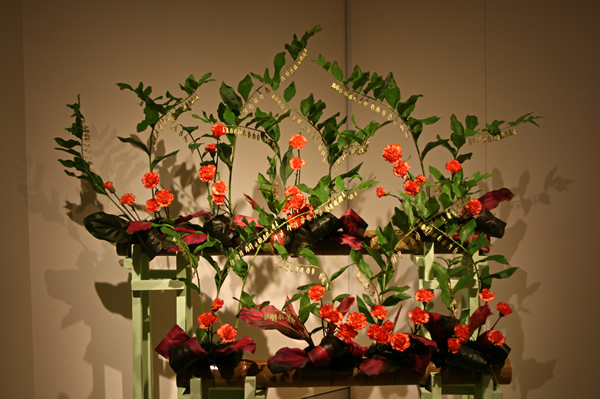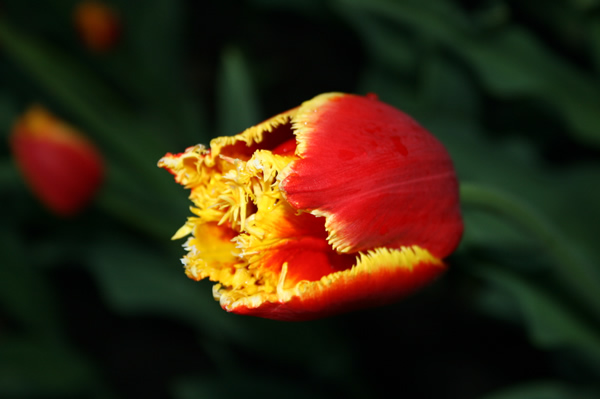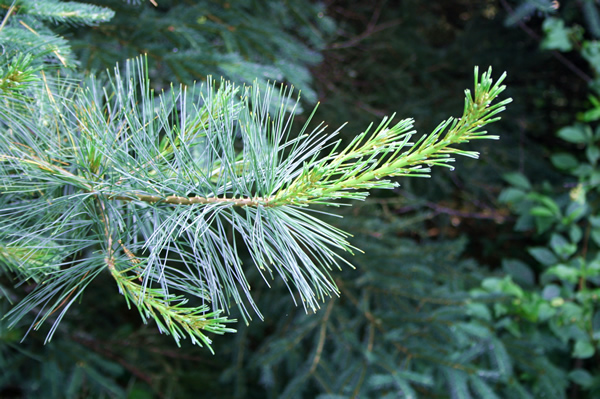
Tag: plant
Puzzle: Lost in a Jigsaw II – Survival of the Fittest
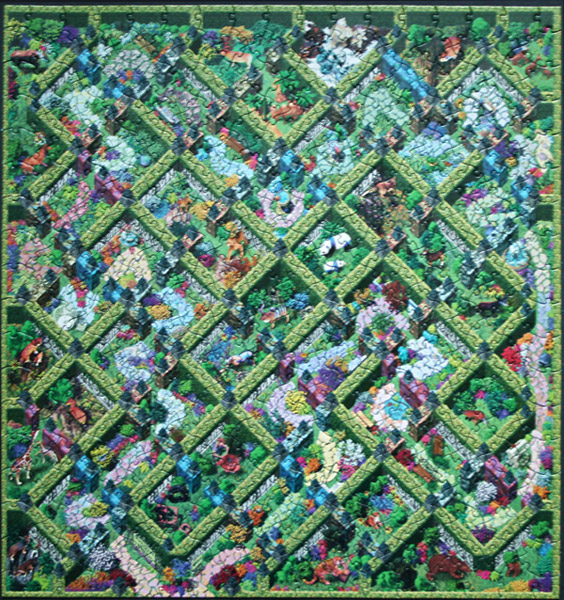
Size: 515 pieces
Dimensions: 47cm x 44cm
Artist: Kristin D. Fundalinski
Producer: Buffalo Games
Instructions: PDF from the manufacturer
Notes: Danger at every turn! Danger and beauty strike an uneasy truce in Lost in a Jigsaw II = Survival of the Fittest. One wrong move can unleash the predator, upset a delicate balance. One wrong turn and you could become the prey. Created by a devious unknown keeper, your safari adventure will take you through fabulous habitat, a tour of beasts both friendly and fierce and an intricate maze with only one way through. Your wits are your only weapons and logic is your only guide through this primal jigsaw puzzle labyrinth.
Your maze consists of a 515 piece diagonally cut jigsaw puzzle, with more than 60 separate scenes, some combining to form individual habitats, and others comprising the one and only route to completion. Lost in a Jigsaw II is o unique that its inner workings are patented. Patent 5,351,957 describes a process by which puzzle scenes are connected by logic and not just simply by color or fit. Each piece is identically shaped and the puzzle can be correctly assembled only by figuring out the devious maze! A complete solution and hints to get you started are included inside. Good luck! [Puzzle box]
Photo: Lilac and white flowers, Charlottetown, July 5, 2009
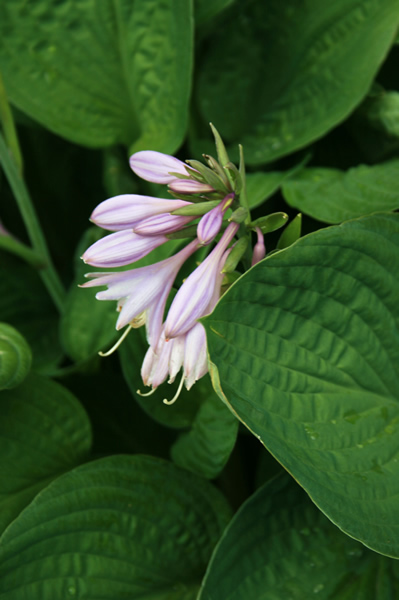
Puzzle: Garden Bluebird
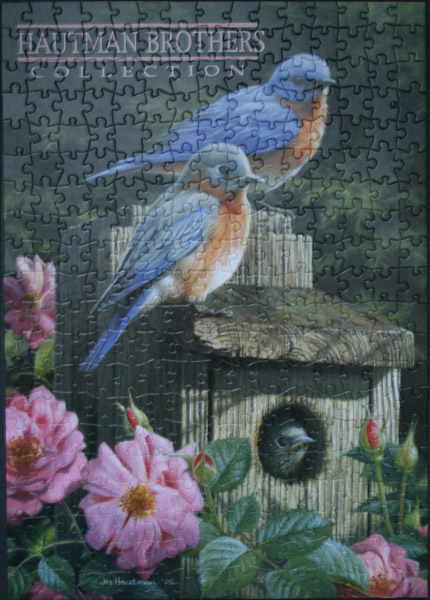
Size: 300 pieces (oversized)
Dimensions: 38cm x 54cm
Producer: Buffalo Games
Artist: Joe Hautman
Notes: The bluebirds are a group of medium-sized, mostly insectivorous or omnivorous birds in the genus Sialia of the thrush family (Turdidae). Bluebirds are one of the few thrush genera in the Americas. They have blue, or blue and red, plumage. Female birds are less brightly colored than males, although color patterns are similar and there is no noticeable difference in size between sexes.
Bluebirds are territorial, prefer open grassland with scattered trees and are cavity nesters (similar to many species of woodpecker). Bluebirds can typically produce between two and four broods during the spring and summer (March through August in the Northeastern United States). Males identify potential nest sites and try to attract prospective female mates to those nesting sites with special behaviors that include singing and flapping wings, and then placing some material in a nesting box or cavity. If the female accepts the male and the nesting site, she alone builds the nest and incubates the eggs. [Wiki]
Puzzle: Tropical Meditation Garden

Size: 1000 pieces
Dimensions: 51.12cm x 66.52cm
Producer: MB Puzzles, Big Ben
Box: photo
Notes: A tropical garden features tropical plants and requires good rainfall or a decent irrigation or sprinkler system for watering. These gardens typically need fertilizer and heavy mulching.
Tropical gardens are no longer exclusive to tropical areas. Many gardeners in colder climates are adopting the tropical garden design, which is possible through careful choice of plants and flowers. Main features include plants with very large leaves, vegetation that builds in height towards the back of the garden, creating a dense garden. Large plants and small trees hang over the garden, leaving sunlight to hit the ground directly. [Wiki]
Photo: Ottawa Nature Museum, Ikebana, Red and Green, May 29, 2009
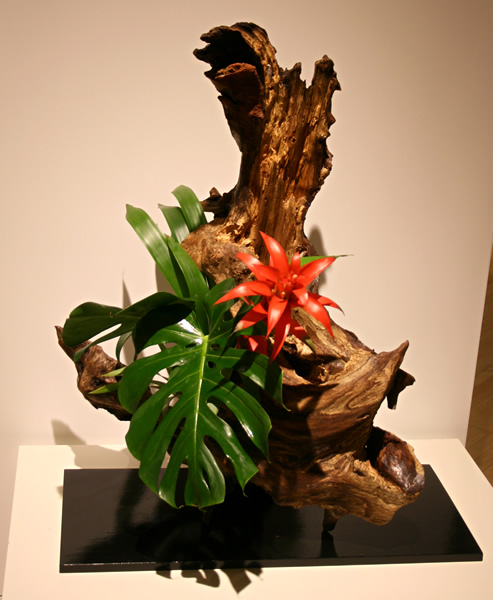
Puzzle: Sauvignon Grapes, Napa Valley
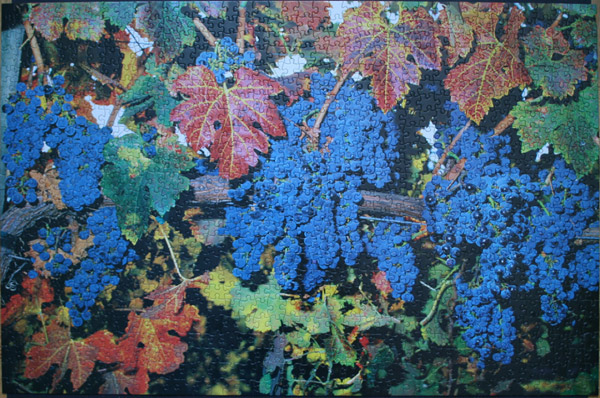
Size: 1000 pieces
Dimensions: 73cm x 48.57cm
Producer: Sure-Lox, Puzzlers Collection series
Notes: Cabernet Sauvignon is one of the world’s most widely recognized red wine grape varieties. It is grown in nearly every major wine producing country among a diverse spectrum of climates from Canada’s Okanagan Valley to Lebanon’s Beqaa Valley. Cabernet Sauvignon became internationally recognized through its prominence in Bordeaux wines where it is often blended with Merlot and Cabernet Franc. From France, the grape spread across Europe and to the New World where it found new homes in places like California’s Napa Valley, Australia’s Coonawarra region and Chile’s Maipo Valley. For most of the 20th century, it was the world’s most widely planted premium red wine grape until it was surpassed by Merlot in the 1990s. [Wiki]
Napa County is a county located north of the San Francisco Bay Area in the U.S. state of California. The word napa is of Native American derivation. Of the many explanations of the name’s origin, the most plausible seems to be that it is derived from the Patwin word “napo” meaning “house”, although local residents will often cite an urban legend that gives the translation as “you will always return”. [Wiki]
Photo: Flower field, April 25, 2009
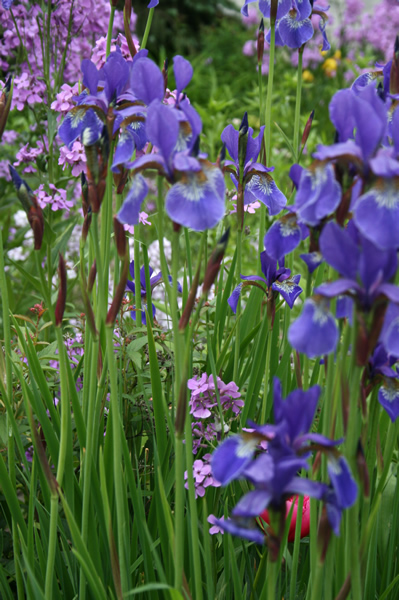
Puzzle: Tea in the Sunroom by Janet Kruskamp
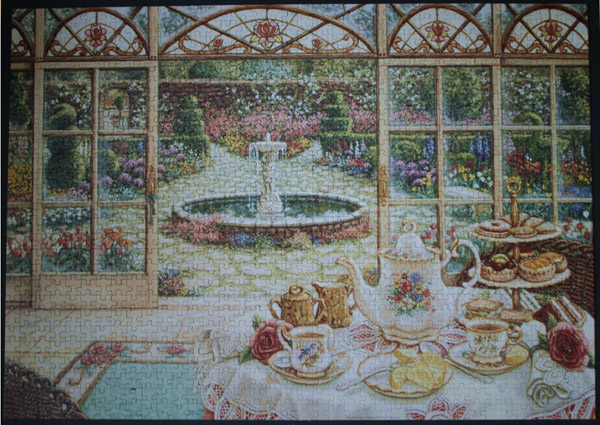
Size: 1000 pieces
Dimensions: 48.1cm x 68cm
Producer: RoseArt, Masterworks series
Artist: Janet Kruskamp
Painting: Enhanced Giclée, 22″ x 28″
Photo: Flowers blooming in room IIIb, November 5, 2010
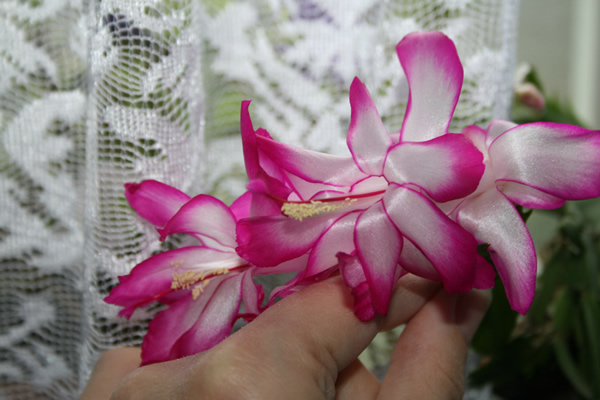
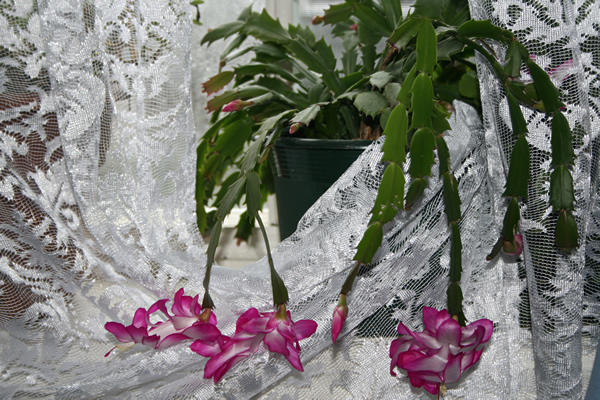
Gallery: Ikebana Retrospective and Museum of Nature
Gallery: Ikebana Retrospective and Museum of Nature
http://www.veddma.com/travel/canada2009/ottawa_ikebana_retrospective/
Puzzle: Grand Canyon
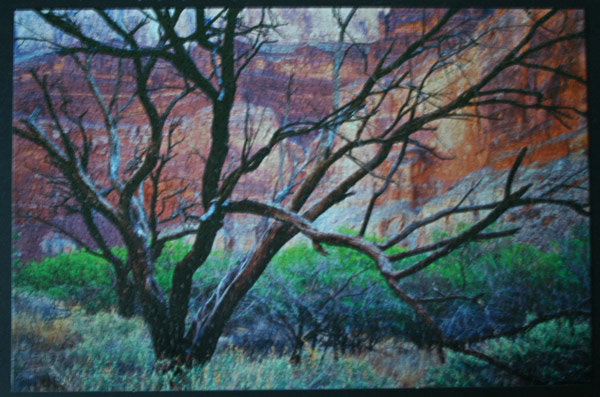
Size: 750 pieces
Dimensions: 59.69cm x 39.37cm
Producer: Wonderful World
Location: The Grand Canyon is a steep-sided canyon carved by the Colorado River in the United States in the state of Arizona. It is largely contained within the Grand Canyon National Park, one of the first national parks in the United States.
Nearly two billion years of the Earth’s geological history have been exposed as the Colorado River and its tributaries cut their channels through layer after layer of rock while the Colorado Plateau was uplifted. While the specific geologic processes and timing that formed the Grand Canyon are the subject of debate by geologists, recent evidence suggests the Colorado River established its course through the canyon at least 17 million years ago. Since that time, the Colorado River continued to erode and form the canyon to the point we see it at today. [Wiki]
Gallery: Ottawa Tulip Festival 2009
Gallery: Ottawa Tulip Festival 2009
http://www.veddma.com/travel/canada2009/ottawa_tulip_festival/
Photo: Red Flower, Hagaparken, Sweden, April 13, 2009
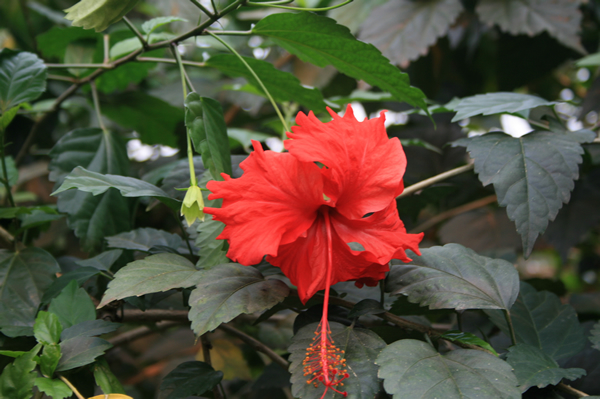
Photo: Gladiolus, pink

Photo: Pansies
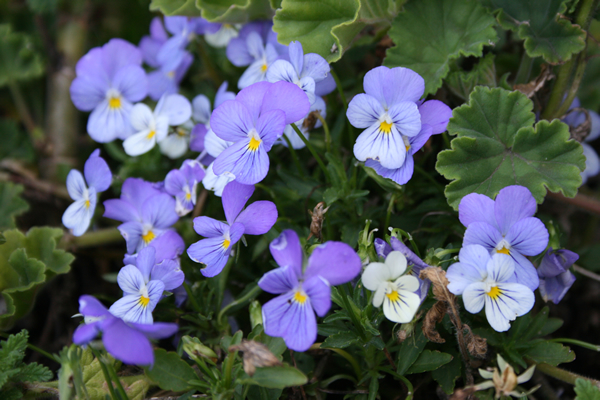
Book: Bonsai, by Fiona Hopes

Title: Bonsai
Author: Fiona Hopes, photographs by Deirdre Rooney
Source: Veddma library
ISBN: 155267519-X
Available online
Notes: The book starts with an overview of the tradition of Bonsai in China, Japan, other Asian countries, and the Western interpretation of the art. It covers briefly the design principles of Bonsai, such as the “two thirds rule” based on the mathematical ratio phi (1:1.618), scale, proportion, balance, light and shade, tone, colour, texture and pattern, rhythm and movement. It goes over the classical Bonsai styles, tools and techniques needed to prune and shape Bonsai, and includes a brief listing of species that work well, as well as pruning techniques and basic care tips throughout the year.
After the introduction, the book focuses on four groups of trees: conifers and evergreen trees, deciduous trees, evergreen shrubs, and deciduous shrubs. Each tree listing is accompanied by a photo, brief description, and quick reference of best styles and sizes, general case, training techniques and common problems.
The author insists that the art of Bonsai is an outdoor art, making an exception for tropical trees which would have to be kept indoors and provided with the correct level of humidity. The overall impression I have gathered is that in Canadian climate with harsh winters (and in Ontario incredibly hot and humid summers), cultivating Bonsai trees would constitute quite an undertaking. The author suggests moving the trees into a shed or a garage to protect them from the elements in the extremely harsh weather, but not bringing them indoors, which implies a need of an external structure being available for that purpose. If one was to pursue this further in Canada, it seems it would be a good idea to find literature that deals with the specifics of the local climate, as well as perhaps find a local organization of Bonsai cultivators to learn of possible workarounds.






